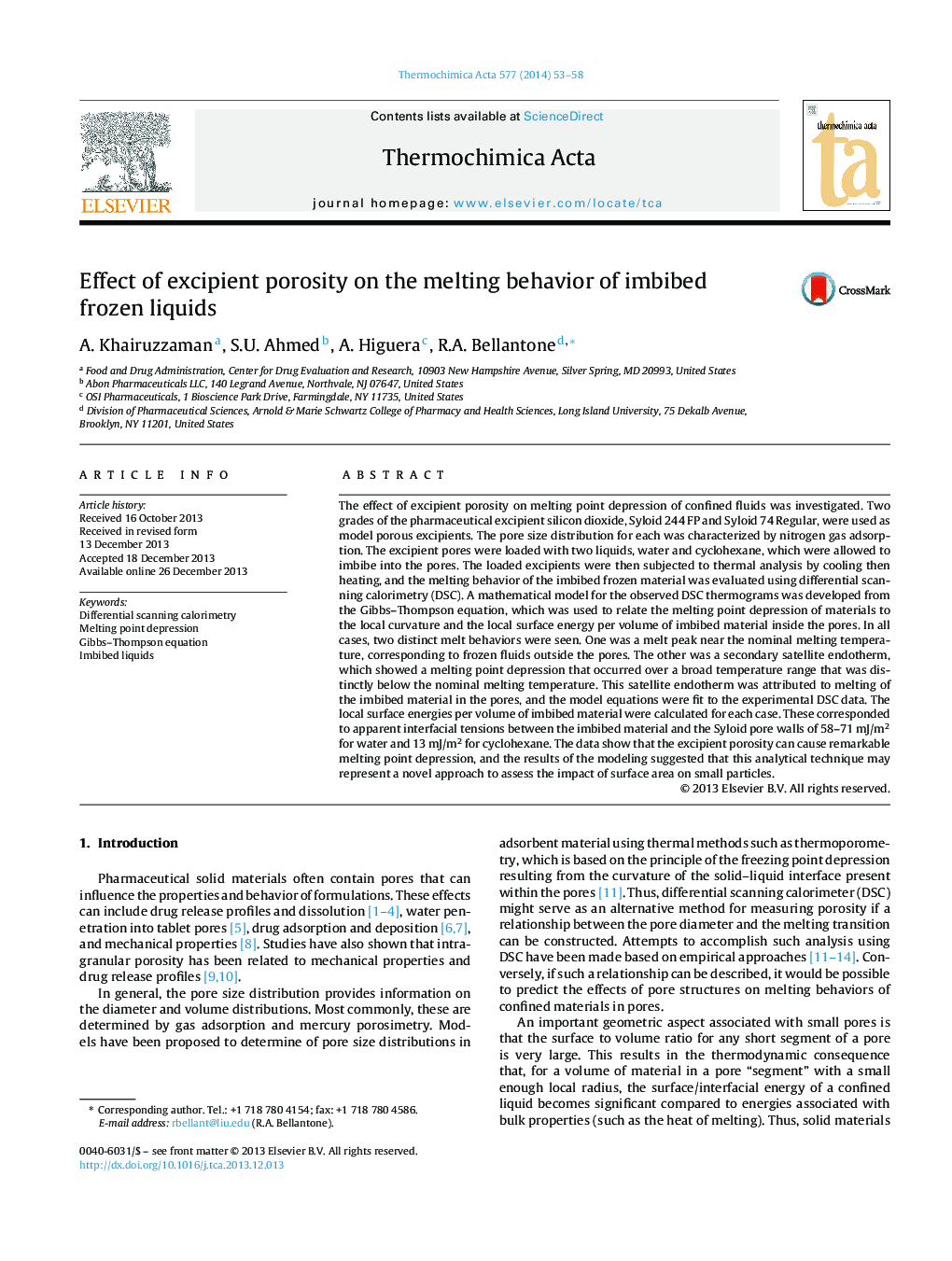| کد مقاله | کد نشریه | سال انتشار | مقاله انگلیسی | نسخه تمام متن |
|---|---|---|---|---|
| 673460 | 1459507 | 2014 | 6 صفحه PDF | دانلود رایگان |
• We show DSC data for melting of ice and cyclohexane in silicon dioxide pores.
• The data show a broad peak at temperatures lower than the bulk melting temperature.
• We relate the DSC data to pore sizes by the Gibbs–Thompson equation.
• We show fits of the model equations to DSC data.
• A single parameter from the fits gives the local surface energy per confined volume.
The effect of excipient porosity on melting point depression of confined fluids was investigated. Two grades of the pharmaceutical excipient silicon dioxide, Syloid 244 FP and Syloid 74 Regular, were used as model porous excipients. The pore size distribution for each was characterized by nitrogen gas adsorption. The excipient pores were loaded with two liquids, water and cyclohexane, which were allowed to imbibe into the pores. The loaded excipients were then subjected to thermal analysis by cooling then heating, and the melting behavior of the imbibed frozen material was evaluated using differential scanning calorimetry (DSC). A mathematical model for the observed DSC thermograms was developed from the Gibbs–Thompson equation, which was used to relate the melting point depression of materials to the local curvature and the local surface energy per volume of imbibed material inside the pores. In all cases, two distinct melt behaviors were seen. One was a melt peak near the nominal melting temperature, corresponding to frozen fluids outside the pores. The other was a secondary satellite endotherm, which showed a melting point depression that occurred over a broad temperature range that was distinctly below the nominal melting temperature. This satellite endotherm was attributed to melting of the imbibed material in the pores, and the model equations were fit to the experimental DSC data. The local surface energies per volume of imbibed material were calculated for each case. These corresponded to apparent interfacial tensions between the imbibed material and the Syloid pore walls of 58–71 mJ/m2 for water and 13 mJ/m2 for cyclohexane. The data show that the excipient porosity can cause remarkable melting point depression, and the results of the modeling suggested that this analytical technique may represent a novel approach to assess the impact of surface area on small particles.
Journal: Thermochimica Acta - Volume 577, 10 February 2014, Pages 53–58
